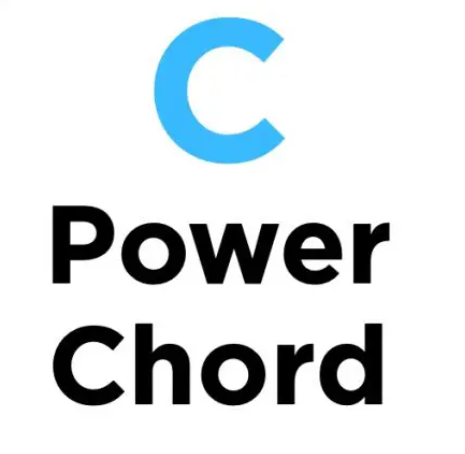The Amazing Sound Of The C Power Chord
Introduction to the C Power Chord
Understanding Power Chords
Power chords, often symbolized as ‘5’ chords (like C5, D5, etc.), are the backbone of many popular music genres, especially rock and metal. They consist of just two notes the root note and the fifth. Unlike traditional chords, power chords are neither major nor minor. This simplicity comes from their stripped-down structure, which typically omits the third note that would determine a chord’s major or minor quality. It’s a very open sound that lets that distortion churn!
The “rock” of power chords lies in their versatility and sonic punch. They produce a full, robust sound despite their simplicity. This is partly due to their common usage in music where distortion is a key element, as distortion amplifies the harmonics, making the chord sound fuller.
The Shadow of the C Power Chord in Music (pop etc)
The C power chord. It’s often one of the first chords learned by beginners due to its relatively easier finger placement than full chords… although you must stretch a bit.
It’s situated at the lower end of the guitar neck, offering a rich, deep tone fundamental in many songs across various genres.
Its simplicity extends beyond just being a beginner-friendly chord. The C power chord has been a staple in the arsenal of many famous guitarists and songwriters, used to create memorable riffs and rhythms that have defined generations. The C power chord’s influence is pervasive and enduring, from classic rock anthems to modern pop-punk hits. Its simplicity allows for creative use in songwriting, making it a favorite for crafting powerful musical hooks and driving rhythms.
Theory Foundations (Continued)
Theory Behind the C Power Chord (C and G Notes)
Understanding the theory behind the C power chord requires a look at its two primary components the C and G notes. In the context of the C major scale (C, D, E, F, G, A, B), C is the root note and G is the fifth note. This interval – the distance between the root and the fifth – is what forms the essence of the power chord. (yada yada, am I right?)
- The Root Note (C) In the C power chord, C is the root note. It’s the base note that names the chord and serves as its tonal center. The root note is what listeners often hear as the predominant pitch in the chord.
- The Fifth (G) The fifth, in this case, G, is exactly seven semitones above the root note.
- This interval is known as a ‘perfect fifth.’ The reason it’s called ‘perfect’ relates to its stability and consonance; it complements the root note without adding any dissonance.
- In the C power chord, the G note strengthens and reinforces the sound of the C, creating a robust and full-bodied sound.
This combination of the C and G notes forms the C power chord, symbolized as C5. The chord’s sound is straightforward and powerful, making it a staple in various music genres.
Why Power Chords Are Not Major or Minor
The unique characteristic of power chords, including the C power chord, is their lack of a major or minor quality. This is due to the absence of the third interval, which is crucial in defining a chord’s tonality
- Absence of the Third– In traditional chords, the third interval determines whether a chord is major or minor. For instance, in a C major chord (C, E, G), the E note is a major third above C, giving the chord a bright, happy sound. In a C minor chord (C, E♭, G), the E♭ (a minor third) creates a sadder, more somber tone.
- Neutral Tonality– Power chords omit this third interval. Without the third, a power chord doesn’t have the tonal qualities that define major or minor chords. This neutrality allows power chords to have a more versatile and less emotionally specific sound. This is particularly useful in genres like rock and metal, where the emphasis is often on rhythm and texture rather than harmonic complexity.
The absence of the third also makes power chords more compatible with distorted tones commonly used in electric guitar playing. Distortion tends to amplify overtones, which can make traditional chords sound muddy or dissonant. Since power chords contain fewer notes, they maintain clarity even with heavy distortion.
Different Ways to Play the C Power Chord
Diagrams for C Power Chord Fingering on the Guitar
To effectively incorporate the C power chord into your guitar playing, it’s crucial to understand the different finger placements and positions on the guitar neck. Below are detailed descriptions and diagrams for playing the C power chord, focusing first on the standard position.
Standard Position on the Guitar Neck
The most common way to play the C power chord is in its standard position, located on the lower frets of the guitar. Here’s how to position your fingers
- Root Note on the Fifth String: Place your index finger on the 3rd fret of the fifth string (A string). This note is C, the root of the chord.
- Fifth on the Fourth String: Place your ring finger on the 5th fret of the fourth string (D string). This note is G, the fifth of the chord.
Diagram

In this diagram, the ‘3’ marks the position of your index finger, and the ‘5’ marks the position of your ring finger.
- Strumming: When playing the C power chord, strum only the strings where your fingers are placed. Avoid strumming the other strings to maintain the clarity of the chord.
- Muting Unused Strings: It’s often useful to slightly touch the unused strings with your fretting hand to mute them, preventing any accidental ringing.
This standard position of the C power chord is fundamental and widely used due to its ease of play and rich sound. It serves as a basis for learning other variations and positions of the C power chord.
Strumming Techniques for Power Chords
Mastering the art of strumming is crucial for effectively playing power chords. Power chords are often used in genres that demand a strong rhythmic presence, like rock and metal. Here are some key techniques to enhance your strumming effectiveness.
1. Downstrokes for Power and Precision
- Technique: Use downstrokes to strum power chords, especially in rock and metal. This involves striking the strings in a downward motion with your pick.
- Impact: Downstrokes provide a heavier and more powerful sound, which is essential for creating the driving force in many songs.
- Practice Tip: Work on consistent downstrokes, focusing on accuracy and timing
2. Controlled Strumming
- Technique: Be mindful of which strings you’re hitting. For most power chords, you’ll only want to strum the strings you’re fretting.
- Importance: Striking unnecessary strings can muddy the sound of the chord.
- Practice Tip: Practice strumming slowly at first, ensuring you hit only the intended strings, then gradually increase your speed.
3. Muting Techniques
- Technique: Use your palm to lightly touch the strings near the bridge of the guitar right after you strum.
- Purpose: This technique, known as palm muting, adds a percussive and rhythmic quality to your playing.
- Application: It’s widely used in rock and punk music to create a chunky, driving rhythm.
4. Dynamic Strumming
- Technique: Vary the intensity of your strumming to add dynamics to your playing.
- Variety: Play with different strumming intensities – from soft and subtle to hard and aggressive.
- Effect: This adds emotional depth to your performance, allowing you to convey different musical expressions.
5. Rhythmic Consistency
- Focus: Maintain a steady rhythm while strumming. The rhythm is often more important than speed, especially in genres like rock and metal.
- Metronome Practice: Use a metronome to develop a consistent strumming rhythm.
6. Alternate Strumming for Speed
- Advanced Technique: For faster tempos, practice alternate strumming (alternating between downstrokes and upstrokes).
- Application: This is useful for genres that require fast-paced strumming like thrash metal or punk rock.
Theoretical Foundations (Continued)
Discussion on Why Power Chords are Not Major or Minor
One of the most distinctive characteristics of power chords is that they are neither major nor minor. This neutral quality makes them incredibly versatile and widely used in various music genres. Understanding why this is the case requires an exploration into the basic structure of chords and the role of intervals in determining their tonality.
The Role of the Third Interval
In traditional chord theory, the third interval is the deciding factor in determining whether a chord is major or minor.
A major chord contains a major third, which is four semitones above the root note. For example, in a C major chord (C, E, G), the E is the major third.
A minor chord contains a minor third, which is three semitones above the root. In a C minor chord (C, E♭, G), E♭ serves as the minor third.
This third interval is what gives major and minor chords their distinctive emotional qualities—major chords often sound bright and happy, while minor chords can sound sad or melancholic.
Omission of the Third in Power Chords
Power chords consist only of the root note and the fifth. The third, which would define the chord’s major or minor quality, is intentionally omitted.
Without the third, power chords have an ambiguous, neutral tonality. They don’t convey the specific emotional resonance that major or minor chords do.
Neutral Tonality
This neutral quality allows power chords to be more versatile. They can fit into a song regardless of its overall tonality, making them a popular choice in genres where mood and tonality can vary widely.
In genres like rock, punk, and metal, where the focus is often on rhythm and texture rather than complex harmonic progressions, the ambiguous nature of power chords makes them particularly useful.
Power chords can be used over different underlying chord progressions without clashing harmonically, providing a solid and stable foundation for a variety of musical styles.
Suitability for Distortion
The use of distortion is common in electric guitar playing, especially in rock and metal. Distortion amplifies overtones, which can make full chords with a third sound muddy or dissonant.
Power chords, with their simpler structure, retain clarity even when heavy distortion is applied, making them ideal for these styles of music.
Iconic Songs Featuring the C Power Chord
The C power chord, with its robust and versatile sound, has been a fundamental element in numerous iconic songs across various music genres. Its simplicity and powerful resonance have made it a favorite among guitarists, from classic rock to modern pop-punk. Here, we explore a few notable songs that have effectively utilized the C power chord, showcasing its impact and versatility in music history.
- “You Really Got Me” by The Kinks: One of the earliest and most influential uses of power chords in rock music, The Kinks’ “You Really Got Me,” released in 1964, features a riff heavily reliant on power chords, including the C power chord. The song’s aggressive guitar sound, achieved partly through power chords, marked a significant moment in the evolution of rock music, influencing the development of hard rock and heavy metal.
- “Smells Like Teen Spirit” by Nirvana: A defining anthem of the 90s and a pivotal track in the grunge movement, “Smells Like Teen Spirit” by Nirvana employs power chords in its iconic opening riff. The use of the C power chord in this song exemplifies the raw energy and simplicity of grunge music, capturing the spirit of a generation.
- “Whole Lotta Love” by Led Zeppelin: is a classic in the rock genre, features power chords as a driving force in its heavy and rhythmic guitar sections. The song, particularly with its use of the C power chord, showcases the band’s innovative approach to rock music, blending blues influences with hard rock power.
- “Basket Case” by Green Day: As part of the punk rock revival in the 1990s, Green Day’s “Basket Case” makes extensive use of power chords, including the C power chord. The song’s high-energy, fast-paced guitar work is a prime example of power chords’ role in punk music, embodying the genre’s characteristic sound.
- “Back in Black” by AC/DC: is a hard rock masterpiece, and its memorable guitar riff prominently features the C power chord. The song demonstrates the power chord’s ability to create a catchy and enduring riff that has become one of the most recognizable in rock music.
References
For those looking to delve deeper into the world of guitar playing and the use of power chords, the following books, articles, and online resources offer valuable information and insights. These resources cater to a range of interests, from beginner guitarists to those seeking a more advanced understanding of music theory and guitar techniques.
Books
- “Guitar Chord Bible” by Phil Capone: A comprehensive guide to over 500 chords, including power chords. Ideal for guitarists of all levels.
- “Fretboard Theory” by Desi Serna: Offers an in-depth look into scales, modes, and chord construction, with a focus on guitar application.
- “The Guitar Handbook” by Ralph Denyer: A classic resource that covers various aspects of guitar playing, including chords, music theory, and maintenance.
Articles
- “The Power of Power Chords” in Guitar World Magazine: An article that explores the history and significance of power chords in rock and other genres.
- “Exploring Guitar Chords” in Acoustic Guitar Magazine: Offers insights into chord structures, including power chords, and their applications in different music styles.
Online Resources
- JustinGuitar (justinguitar.com): Features free guitar lessons with a section dedicated to power chords and playing techniques.
- Guitar Tricks (guitartricks.com): Provides tutorials and lessons on various guitar techniques, including the use of power chords.
- Ultimate Guitar (ultimate-guitar.com): A vast collection of guitar tabs and chord charts, including songs featuring C power chords.
- YouTube Channels such as Marty Music and GuitarLessons365: These channels offer video tutorials on power chords, song lessons, and general guitar-playing tips.







